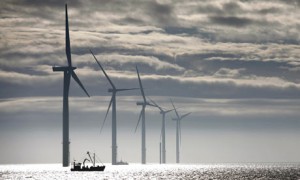In the same way that having Insurance company executives testify on camera before Congress about what their companies do is be the best way to guarantee passage of universal health coverage, Republican opposition to climate legislation written by the coal lobby will likely be its best friend, as well.
House Republicans are circulating a PowerPoint document that purports to show the regional breakdown of costs for energy consumers under the Waxman-Markey climate and energy bill (ACES). The header: “Most States Lose Under the Pending Climate Bill.”
The catch? It appears to have been authored by the coal giant Peabody Energy. [Note: It was actually authored by the National Mining Assocation; see updates below.]
The document was discussed on a conference call held by the “Rural America Solutions Group” within the GOP caucus on Thursday, hosted by group co-chairs Frank Lucas (R-Okla.), Sam Graves (R-Mo.), and Doc Hastings (R-Wash.). According to a press release, the call was meant to “highlight how the Democrats’ National Energy Tax will make it more expensive for rural Americans to fertilize the crops, put fuel in the tractor and food on the table.”
It isn’t that this is anything more than run-of-the-mill skulduggery, which it is, by and large. The interesting point about it is just how out-to-lunch this approach is to governing, in terms of using government to enact solutions to massive problems that require a centralized organization. Like a government. Industry shills and bought-and-paid for politicos are our connection to the Gilded Age proper. If you’re a romantic and wonder what it was like, this is what is was like.
Its excesses and corruption were its undoing and eventually led to reforms. Our excesses being a little more poisonous in terms of waste and emissions, and our corruptions enlarged to include the intellectual, our undoing is likely to be far more jarring than a matter of a few reforms.
So it is enlightening, in its way, to have chief polluters and fiscal looters advocate and agitate for the policies that have enshrined their advantageous positions. They’re as likely as any of us to be perfectly frank about their successes and points of view. Not always truthful, but you’d be amazed.
These strategies keep our refusals to change right in front of us, which is where they need to be. The longer we/they keep people right out in front spouting nonsense about the how costs of staying healthy or using less energy are too great to bear, the more effective measures to protect health and save energy can be.



